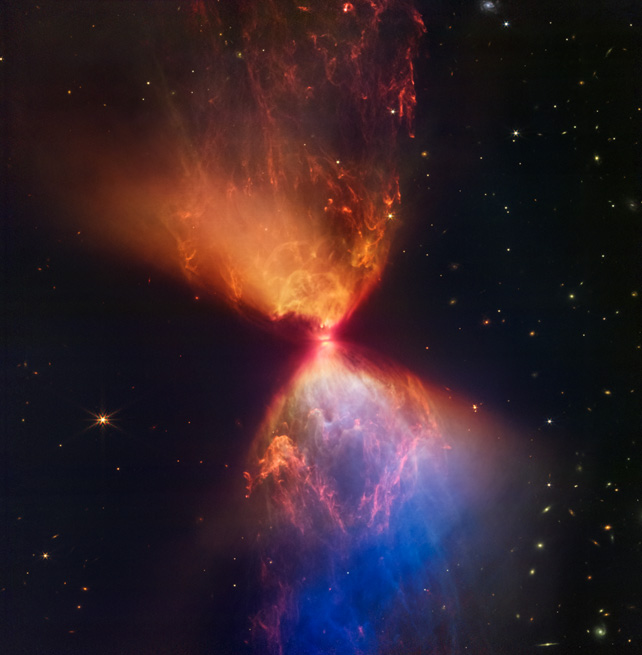JWST Captures a Newborn Star Starting Life in The Middle of a Dusty Hourglass
On Wednesday, the James Webb Space Telescope released its most recent depiction of cosmic grandeur, a spectral hourglass of orange and blue material being ejected from a developing star in its core.
According to a joint release from NASA and the European Space Agency, the vibrant clouds were never before observed since they can only be viewed in infrared light. Webb’s Near-Infrared Camera (NIRCam) recorded them.
The edge of a revolving disk of gas at the hourglass’ neck obscures the protostar L1527, a very young star.
Nevertheless, light leaks out from the disk’s top and bottom, illuminating the hourglass-shaped clouds.
According to the statement, the clouds are the result of debris blasted from the star colliding with nearby matter. It said, “The dust is lightest in the blue areas and heaviest in the orange areas.
Being just 100,000 years old and in the early stages of star formation, the protostar is not yet able to produce its own energy.

The protostar will receive material from the dark disk encircling it, which is roughly the size of our solar system, until it ultimately achieves “the threshold for nuclear fusion to commence,” according to the statement.
In the end, it said, “this perspective of L1527 offers a glimpse into what our Sun and Solar System seemed to be like in their infancy.”
The protostar is situated in the Taurus molecular cloud, a stellar nursery that is 430 light years away from Earth and is home to hundreds of almost formed stars.
The most potent space telescope ever created, Webb, has been in operation since July and has already unlocked a wealth of ground-breaking data and breathtaking photos.
The goal is that it will usher in a new era of discovery.
The $10 billion telescope’s primary objective is to examine the life cycle of stars. Exoplanets, or planets outside of the Solar System, are another area of primary study interest.
Do not forget to share your opinion with us to provide you with the best posts !




0 Comments